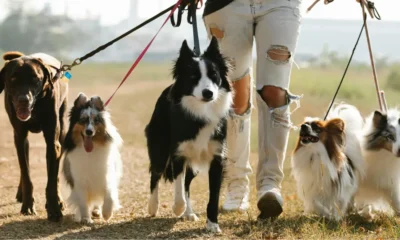Ocean
Sea Plants in The Ocean
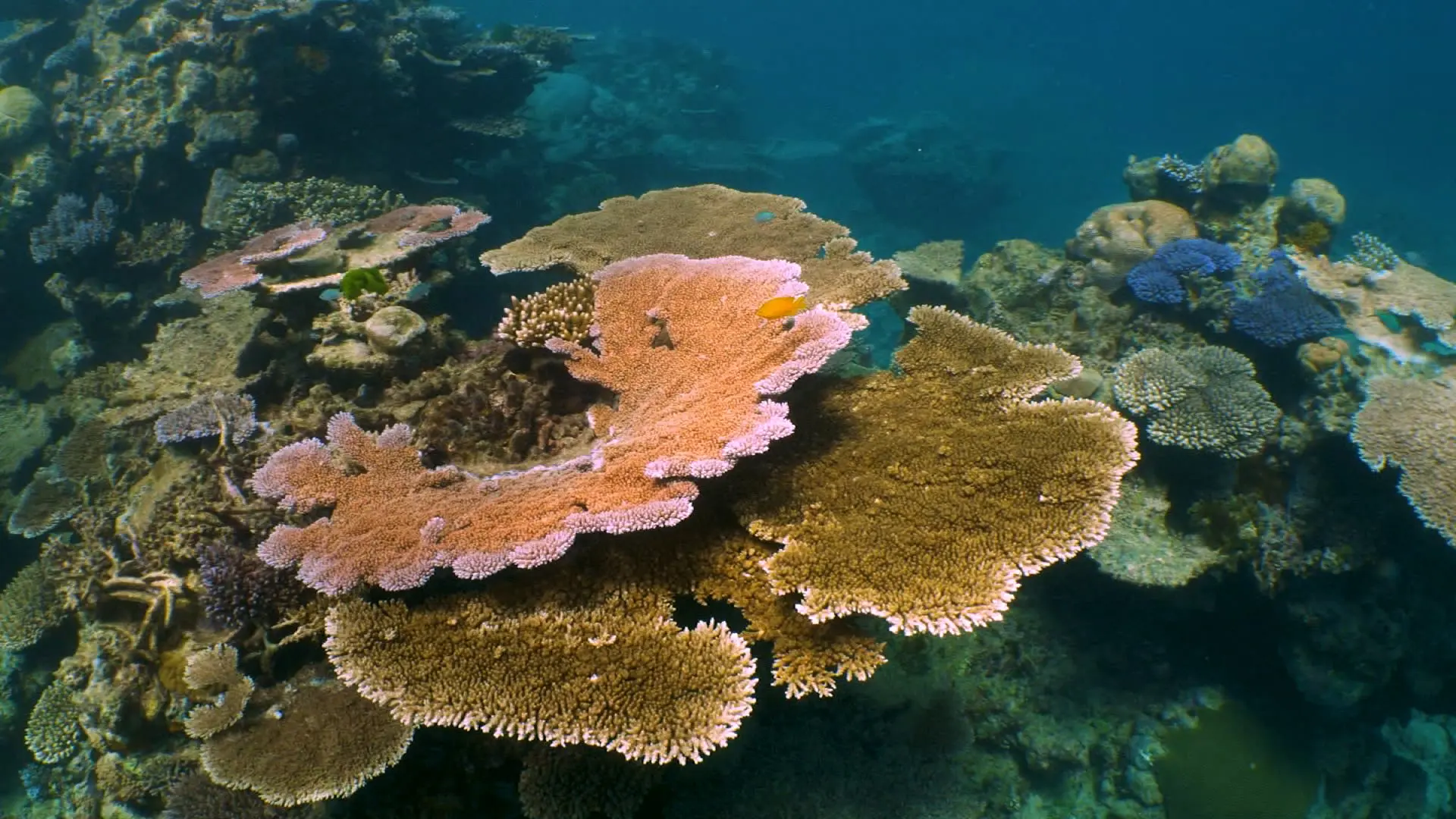
There are many types of sea plants in the ocean. The most common type is seaweed. Seaweed provides food for some animals, like the green sea turtle, and homes for others, like the hermit crab. Other plants are coral reefs, seagrass, mangroves, and kelp forests. These plants provide habitats that create a balanced ecosystem.
What is The most Dangerous Plant in The Ocean?
The most dangerous plant in the ocean is the Caulerpa taxifolia. This plant is found in the Mediterranean Sea and is nicknamed “killer algae.” The deadly aspect of this plant is its propagation. As it reproduces, the Caulerpa taxifolia spreads more of its hazardous self, increasing its lethal risks to nearby marine life.
“Sea Plants in The Ocean“
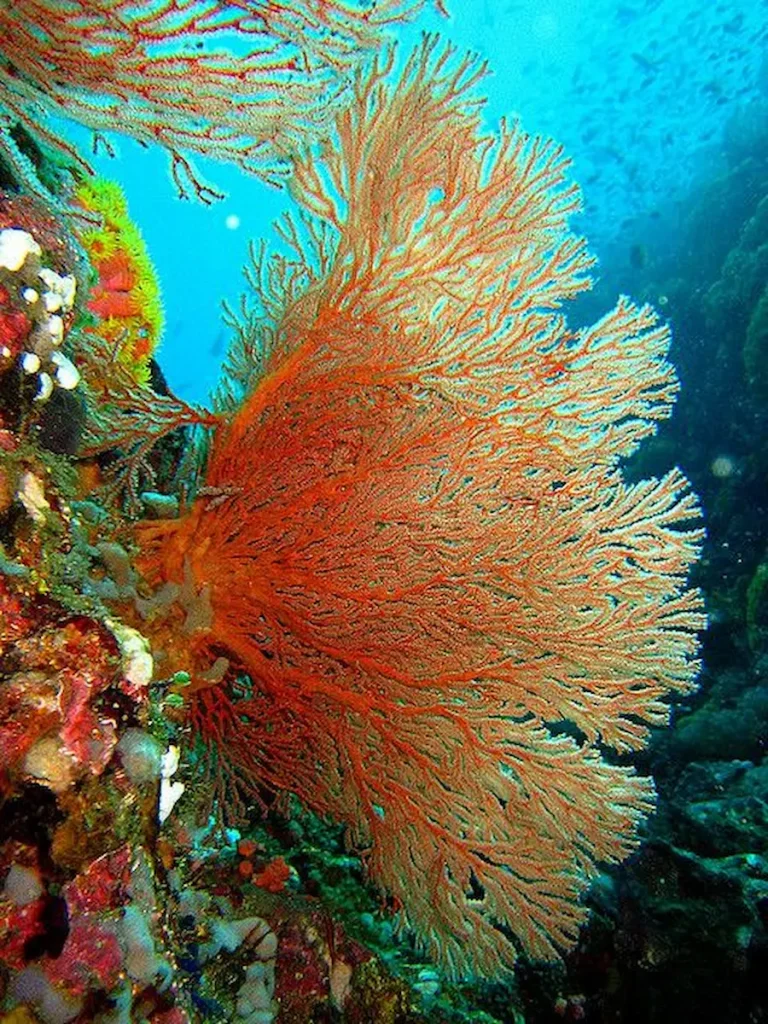


Types of Underwater Ocean Plants
Many types of underwater plants live in the ocean and coastlines. Some examples of them include seaweeds and kelp. Kelp is a type of seaweed that grows along continental shelves and reefs. Others include seagrasses and corals. These plants require sunlight to grow, which they get from their proximity to the water’s surface. The types of plants found at different depths can be very different, and the amount of sunlight present varies with depth.
Sea Plants Names With Pictures
“Sea Plants in The Ocean“
Muskgrass
When the first settlers reached America, they encountered an unknown plant with very tough fibers in its leaves. These fibers were strong enough to be turned into rope or twine. Nowadays, this is called Muskgrass or Ironweed, but it was originally called Tow-Corl in their language. Muskgrass plants are green with spikes on them and about 2 feet tall.
“Sea Plants in The Ocean“


Pondweed
Pondweed is a common aquatic plant that has been around for centuries. It may also be known by the names Scirpus spp, Cattail, Typha latifolia, and Schoenoplectus acutus. Pondweed is said to have medicinal properties, but most research remains inconclusive. There are an estimated 250 species of pondweed in the world today, with dozens in North America alone.
“Sea Plants in The Ocean“


Kelps
For many centuries, kelps were the primary food source for coastal fisheries in Norway. A type of algae with a long string-like shape, they are found in shallow ocean waters and can grow up to 100 feet in length. However, a new study shows that the effects of climate change have resulted in a 90% drop in kelp populations in Norway since 1969. Since they provide shelter and food for fish, they have been considered an essential part of the ecosystem.
“Sea Plants in The Ocean“
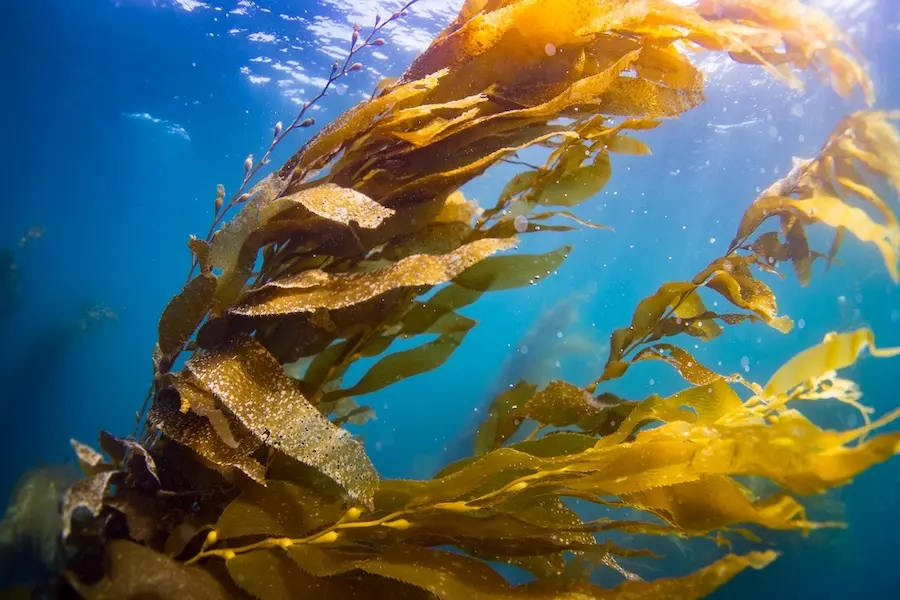

Purple Coral
The beautiful purple coral in the ocean has captured many people’s attention. Coral can be found in many different colors; however, it is the only living thing in purple. Purple coral needs just as much sun and water movement to survive as any other coral does.
“Sea Plants in The Ocean“


Green Sea Anemone
The Green Sea Anemone is a type of anemone that lives in the ocean and is popular in the pet trade. These sea creatures are found in shallow water, often hiding in crevices near rocks or settling into a cushy spot on the seafloor. They come in various colors depending on their location, from bright green to brown-green to orange-brown.
“Sea Plants in The Ocean“


Coral reefs
Coral reefs are one of the most diverse ecosystems on Earth. They are home to thousands of fish, plants, and animals. Coral reefs are also important for human communities. They provide food and income for coastal residents, and they protect coastlines from storms. Unfortunately, coral reefs are threatened by climate change, ocean acidification, and other human activities.
Coral reefs are one of the most diverse and beautiful ecosystems on Earth. They are formed when coral polyps attach to a hard surface and secrete a calcium carbonate skeleton. Over time, these skeletons can build up into extensive reefs. Coral reefs provide a home for various marine creatures, including fish, sea turtles, and dolphins. They also serve as a vital source of food and income for many coastal communities.
“Sea Plants in The Ocean“


Open Brain Coral
Open Brain Coral is a reef-building coral found in the Indo-Pacific, typically on sandy or rubble bottom. The shape of the coral gets its name from the appearance of its polyps, which resemble a human brain. Open Brain Coral is found in many colors, including green, brown, and red. Studies have shown that this coral can grow up to six feet tall and six feet wide.
“Sea Plants in The Ocean“


Anemone and Clownfish
Anemones and clownfish are popular topics for aquariums. They are both colorful and exciting to watch. What many people don’t know is that they are also found in the wild together. Anemones provide a home for clownfish, and in turn, the clownfish protects the anemone from predators.
The anemone is a sea creature that can be found in both the Pacific and Atlantic oceans. It is often brightly colored and has a long, slim body. The anemone lives in a symbiotic relationship with the clownfish. The clownfish lives in the anemone’s tentacles and eats the parasites that live on the anemone. In return, the anemone protects the clownfish from predators.
“Sea Plants in The Ocean“
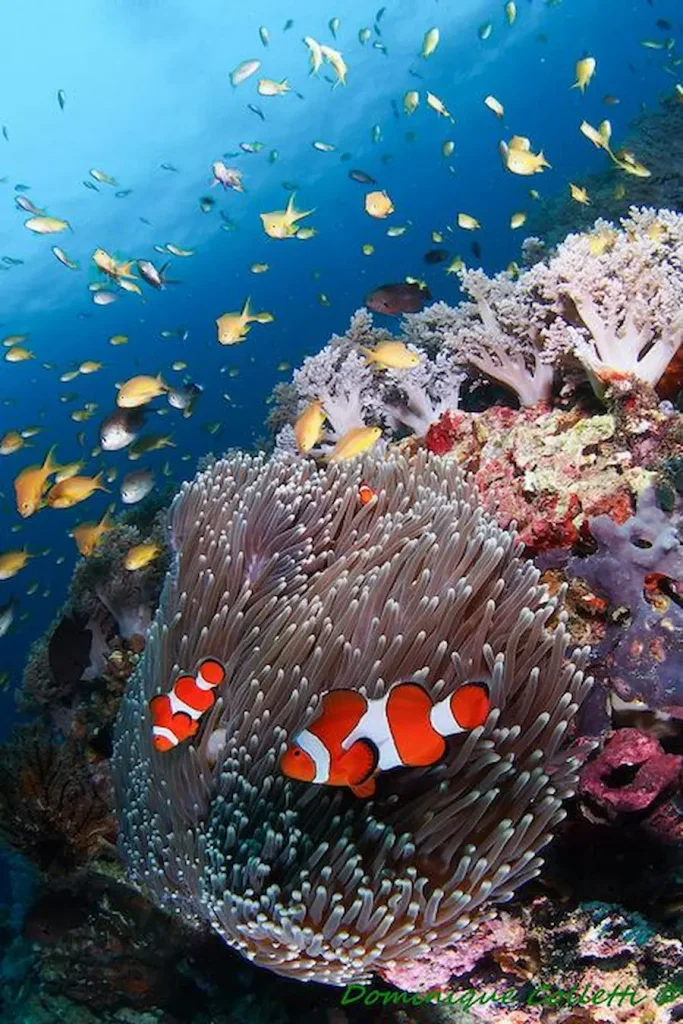

What is The Difference Between a Sea Plants And an Animal?
Sea plants are a type of plant that can be found in saltwater. There are many different sea plants, and they come in all shapes and sizes. Some sea plants can grow very large, while others are very small. Sea plants can provide food and shelter for marine animals, and they can also help clean the water. Animal s are a type of organism that can move around independently. They are made up of cells, and they get their energy from food.
The ocean is one of the most mysterious places on Earth. It is full of creatures that are both strange and wonderful.
What is The Difference Between Seaweed And Algae?
Weed and algae are both important parts of underwater life. They provide food for fish and other sea animals, store CO2, help eliminate toxins, provide oxygen, and so much more! However, there are some differences between seaweed and algae. Seaweed is a macroscopic plant that lives in the water, while algae are microscopic plant that lives near or on the surface of the water.
How to Protect Sea Plants in The Ocean
And are not the only animals that inhabit our oceans; it is important to make sure that they stay healthy. One of the most important things for this is to protect sea plants. These plants give the ecosystem food and oxygen, so if they are gone, life in the ocean will quickly die out. When these plants are destroyed by any means, the whole ecosystem feels it.
Advantages of Protecting Sea Plants
Some of the most important animals in our world live in the ocean. Animals such as whales, sea turtles, and fish use the ocean as their home. When we protect sea plants, we also cover these animals! Sea plants help keep the oceans clean and purify them with oxygen. They also provide a habitat for a number of different species that cannot be found on land. Protecting these plant life is vital to ensuring that marine life can thrive too.
“Sea Plants in The Ocean“
“Sea Plants in The Ocean“
Conclusion
In conclusion, the plants in the ocean are necessary for the survival of all living beings on this planet.
Sea plants act as food for many species of animals and also provide oxygen for surrounding life forms.
This is to say these plants are providing us with important things that we need to survive.
If anything, humans should take care of these plants, not destroy them.
The human race needs to do something soon before it’s too late!
More Resources

Ocean
Coral Reefs in the Sea: A Vital Underwater World

Key Takeaways
- Coral reefs are often called the “rainforests of the sea” due to their incredible biodiversity.
- They protect coastlines, support marine life, and contribute to economies through tourism and fishing.
- Threats include climate change, pollution, and overfishing, making conservation efforts crucial.
Imagine diving into crystal-clear waters, surrounded by vibrant colors, exotic fish, and intricate coral formations. This magical world is home to coral reefs—one of nature’s most breathtaking creations. But coral reefs aren’t just beautiful; they’re essential for the health of our oceans and planet. Let’s dive deep into what they are, why they matter, and how we can help protect them.
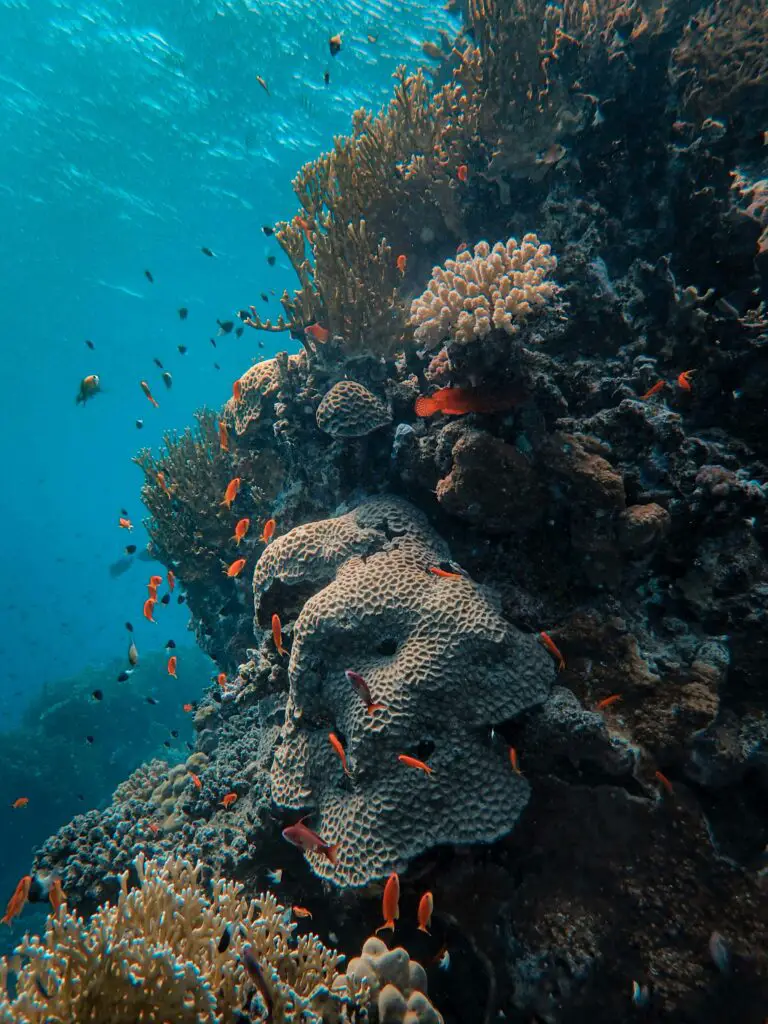
What Are Coral Reefs?
Coral reefs are large underwater structures made from the skeletons of tiny animals called coral polyps. These polyps build reefs over thousands of years by secreting calcium carbonate, which forms their hard, protective skeletons.
There are four main types of coral reefs:
- Fringing Reefs: Found close to the shore and directly attached to the coastline.

- Barrier Reefs: Located further offshore and separated from the coast by a lagoon.

- Atolls: Ring-shaped reefs that encircle a lagoon, often in the middle of the ocean.
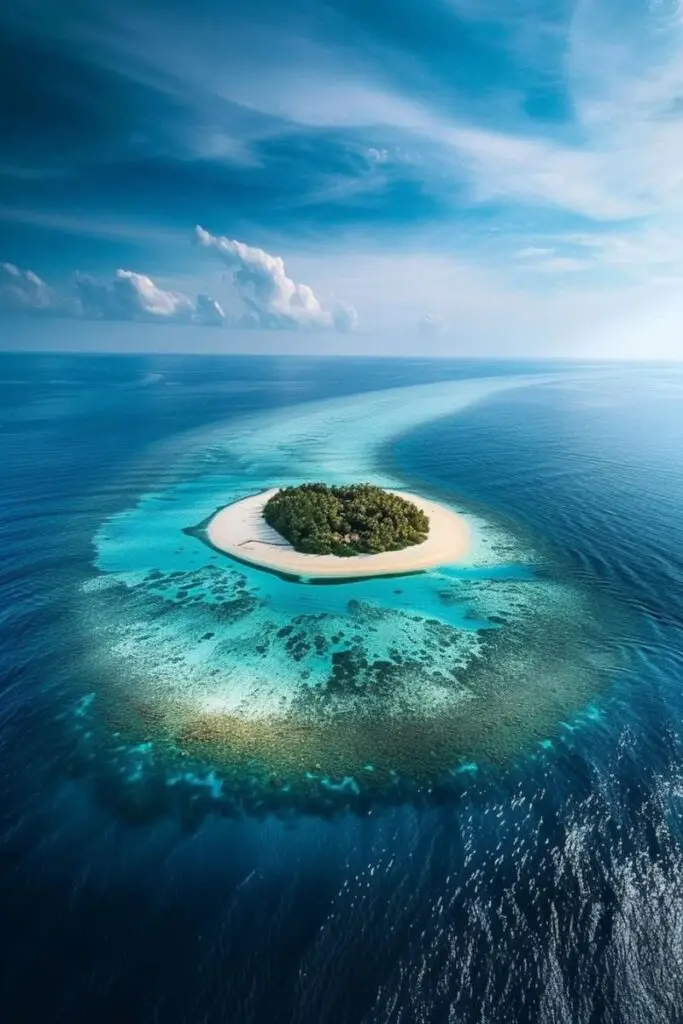
- Patch Reefs: Isolated, small reef structures often found within lagoons or atolls.

Coral reefs thrive in warm, shallow waters where sunlight can reach them. This sunlight is crucial for the algae, called zooxanthellae, that live inside corals and provide them with energy through photosynthesis.
Importance of Coral Reefs
Coral reefs aren’t just stunning underwater formations—they’re vital to life on Earth. Here’s why:
1. Home to Marine Life
Coral reefs are some of the most diverse ecosystems on the planet. They provide shelter, food, and breeding grounds for nearly 25% of all marine species, including fish, mollusks, and crustaceans.
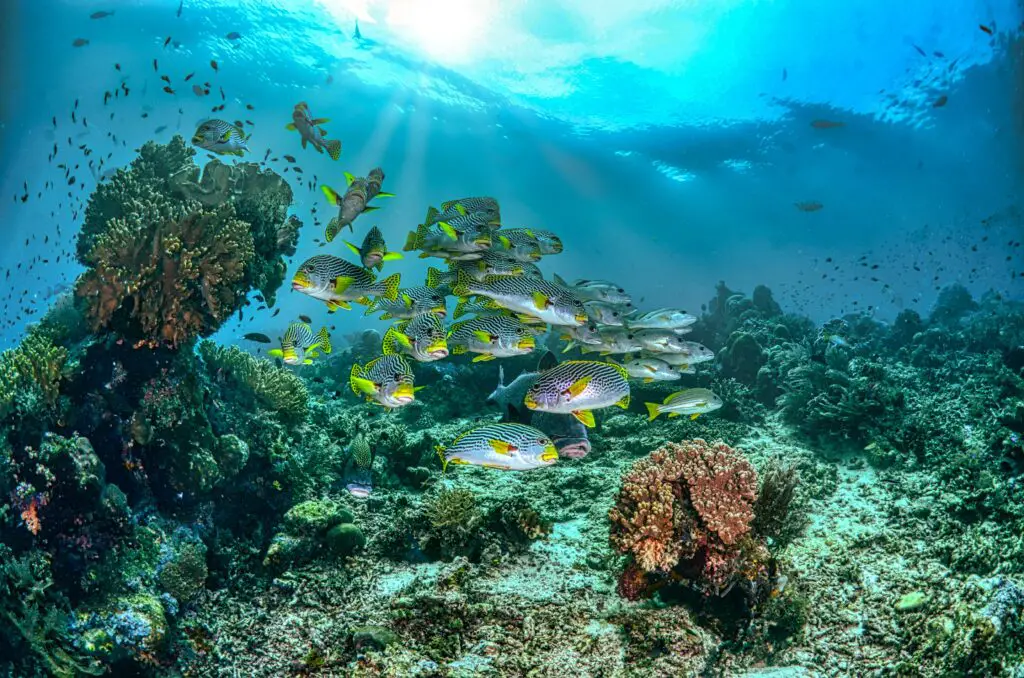
2. Protection for Coastlines
Reefs act like natural barriers, absorbing the force of waves and storms. This helps protect coastal areas from erosion, flooding, and storm damage.

3. Economic Contributions
Coral reefs support fishing and tourism industries, generating billions of dollars annually. They provide livelihoods for millions of people, especially in coastal communities.
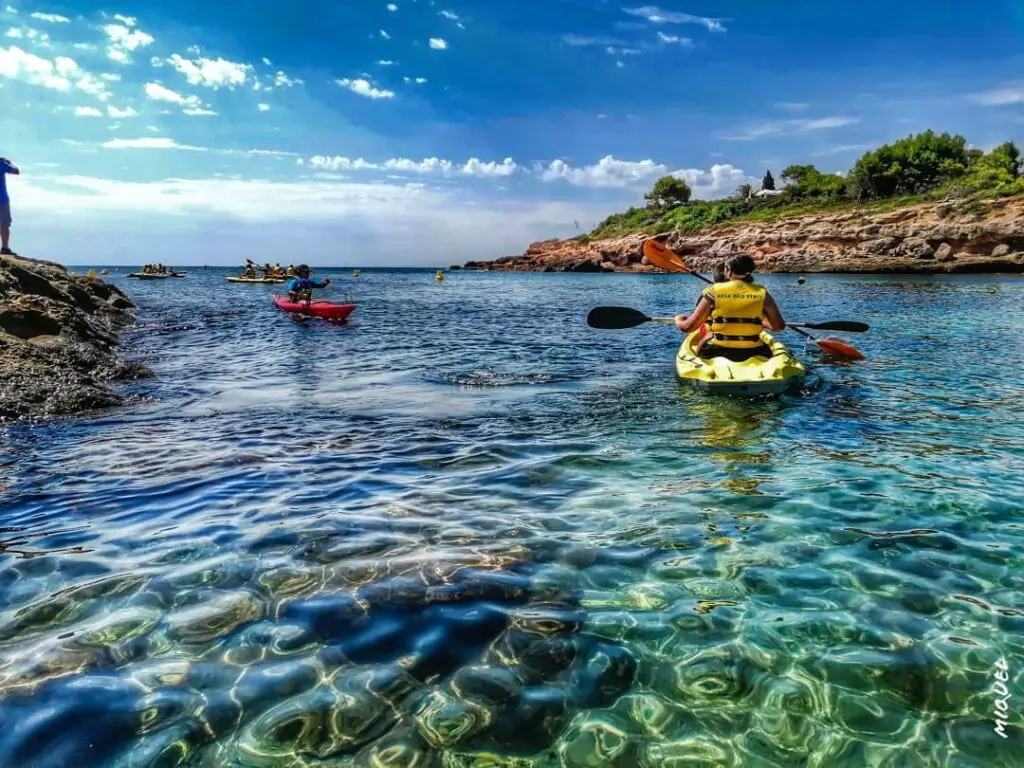
4. Carbon Storage
Healthy coral reefs help regulate the Earth’s carbon dioxide levels by storing carbon and reducing its impact on global warming.

Threats to Coral Reefs
Despite their importance, coral reefs are under serious threat. Here are the major challenges:
1. Climate Change
Rising sea temperatures cause coral bleaching, where corals expel their algae and turn white. Without algae, corals lose their energy source and often die.
2. Pollution
Plastic waste, oil spills, and agricultural runoff poison coral reefs. Sediment from deforestation can also block sunlight, preventing photosynthesis.
3. Overfishing
Unsustainable fishing practices disrupt the balance of marine ecosystems. Destructive methods, like blast fishing, can physically destroy reef structures.
4. Ocean Acidification
Increased carbon dioxide in the atmosphere makes oceans more acidic. This weakens coral skeletons, making them more fragile and susceptible to damage.
Conservation of Coral Reefs
Protecting coral reefs is a global responsibility. Here’s how we can make a difference:
1. Restoration Efforts
Scientists are developing techniques to grow corals in nurseries and transplant them onto damaged reefs. Artificial reefs made from sustainable materials can also provide new habitats for marine life.
2. Sustainable Tourism
Tourists can support conservation by choosing eco-friendly dive operators, avoiding touching corals, and reducing their plastic waste.
3. Government and Global Action
International agreements like the Paris Climate Accord aim to reduce emissions and slow global warming. Local governments can also enforce fishing regulations and create marine protected areas.
4. Individual Action
Everyday choices matter. Reduce single-use plastics, conserve water, and support organizations working to protect coral reefs.
Fascinating Facts About Coral Reefs
- The Great Barrier Reef in Australia is the largest coral reef system in the world, spanning over 2,300 kilometers.
- Coral reefs cover less than 1% of the ocean floor but support over 25% of marine species.
- Some corals glow under UV light due to proteins in their tissues—a phenomenon called biofluorescence.
FAQs About Coral Reefs
Q: What are coral reefs made of?
A: Coral reefs are built by coral polyps, which secrete calcium carbonate to form their skeletons.
Q: Why are coral reefs important to humans?
A: They provide food, livelihoods, coastal protection, and are vital to marine biodiversity.
Q: How can we protect coral reefs?
A: By reducing pollution, practicing sustainable tourism, and supporting conservation efforts.
Conclusion
Coral reefs are more than just underwater treasures—they’re the backbone of marine ecosystems and protect our coasts and climate. But with threats like climate change and pollution, their survival is at risk. Protecting these vital ecosystems requires effort from all of us, whether it’s through global action or simple everyday choices.
Let’s commit to preserving coral reefs, ensuring they thrive for generations to come.
Ocean
What Animals Live in the Deep Ocean?

Key Takeaways
- The deep ocean is home to unique creatures that have adapted to survive extreme conditions.
- Animals like anglerfish, giant squid, and vampire squid thrive in total darkness and intense pressure.
- Deep-sea creatures use features like bioluminescence and slow metabolisms to endure their environment.
- Conservation of the deep ocean is crucial as these ecosystems face threats like mining and overfishing.
What Animals Live in the Deep Ocean?
Imagine plunging into the ocean’s depths, where sunlight can’t reach, and strange, otherworldly creatures thrive in darkness. The deep ocean is one of the most mysterious places on Earth, with animals so unique that they seem almost alien. But what exactly lives down there? Let’s dive into this fascinating world to find out!
Characteristics of the Deep Ocean
The deep ocean is unlike any other place on Earth. It starts where sunlight fades—about 200 meters (656 feet) below the surface—and extends down to depths of 11,000 meters (36,000 feet) in ocean trenches. Here’s what makes it so unique:
- Total Darkness: Sunlight doesn’t penetrate these depths, so animals rely on other senses or create their own light.
- Extreme Pressure: The deeper you go, the greater the pressure. Animals must have special adaptations to withstand this.
- Cold Temperatures: The water is near freezing, so creatures have slow metabolisms to conserve energy.
How Do Deep-Sea Animals Survive?
Animals living in the deep ocean have developed amazing ways to survive these harsh conditions:
- Bioluminescence: Some animals, like the anglerfish, produce their own light to attract prey or communicate.
- Flexible Bodies: Many deep-sea creatures, such as jellyfish, have soft, squishy bodies to handle extreme pressure.
- Efficient Energy Use: These animals eat less and move slowly to make their energy last.


Fascinating Deep-Sea Animals
The deep ocean is full of fascinating creatures. Here are some of the most incredible ones:
1. Anglerfish
- These fish are famous for the glowing lure on their heads, which they use to attract prey.
- Females are much larger than males, and males often latch onto females as parasites.

2. Giant Squid
- One of the largest invertebrates, it can grow up to 40 feet long!
- Rarely seen alive, giant squid are known from the deep scars they leave on sperm whales during battles.

3. Vampire Squid
- Despite its spooky name, it’s harmless and feeds on detritus (dead organic matter).
- Its webbed tentacles and bioluminescent spots make it a sight to behold.

4. Deep-Sea Shrimp
- These tiny creatures survive on the ocean floor by scavenging organic material.
- Some live near hydrothermal vents, where they feed on bacteria.

5. Giant Isopod
- A relative of the pill bug, these oversized crustaceans grow up to 16 inches long!
- They live on the seabed and feast on whale carcasses and other dead marine life.

6. Dumbo Octopus
- With flapping ear-like fins, these adorable creatures were named after Disney’s Dumbo.
- They live at depths of over 13,000 feet and eat small crustaceans and worms.
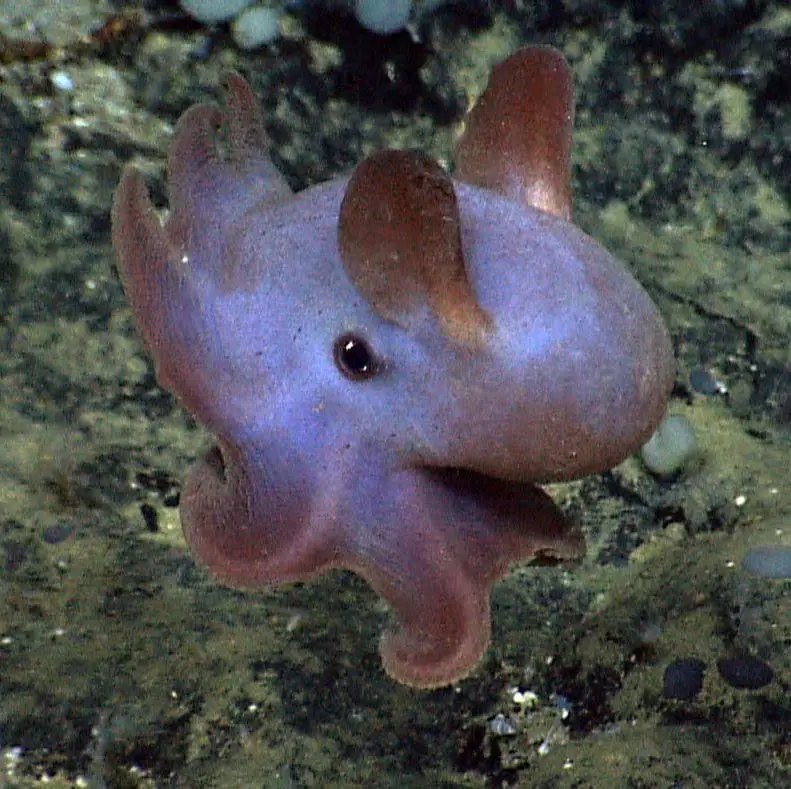
How Do Scientists Study Deep-Sea Life?
Studying deep-sea animals isn’t easy. Scientists use advanced technology to explore these remote areas:
- ROVs (Remotely Operated Vehicles): These machines are sent to extreme depths to capture footage and samples.
- Submersibles: Human-operated submarines allow researchers to observe deep-sea life directly.
- Sonar Mapping: This helps identify the seafloor’s features and potential habitats for deep-sea animals.



Why Should We Protect the Deep Ocean?
The deep ocean is under threat from human activities:
- Deep-Sea Mining: Mining for minerals damages fragile ecosystems.
- Overfishing: Many deep-sea fish are slow to reproduce, making them vulnerable to overfishing.
- Climate Change: Rising ocean temperatures and acidification harm deep-sea habitats.
Protecting these ecosystems is crucial not just for the animals but for the planet’s health.

Image Article Source : https://www.pinterest.com/
FAQs
What is the deepest-dwelling fish ever found?
The snailfish holds the record for living at depths of over 8,000 meters (26,000 feet).
Are there predators in the deep ocean?
Yes! Many deep-sea creatures, like the anglerfish and gulper eel, are skilled predators.
Can humans survive in the deep ocean?
No, the extreme pressure and lack of oxygen make it impossible without special equipment.
Conclusion
The deep ocean is a world of mystery, full of extraordinary animals that have adapted to survive in one of the most extreme environments on Earth. From glowing fish to giant squids, these creatures remind us of the incredible diversity of life on our planet. While we’ve learned so much about the deep ocean, there’s still so much more to discover. Let’s work together to protect these fascinating ecosystems for future generations!
Ocean
Oceans in the World and Their Information & Locations
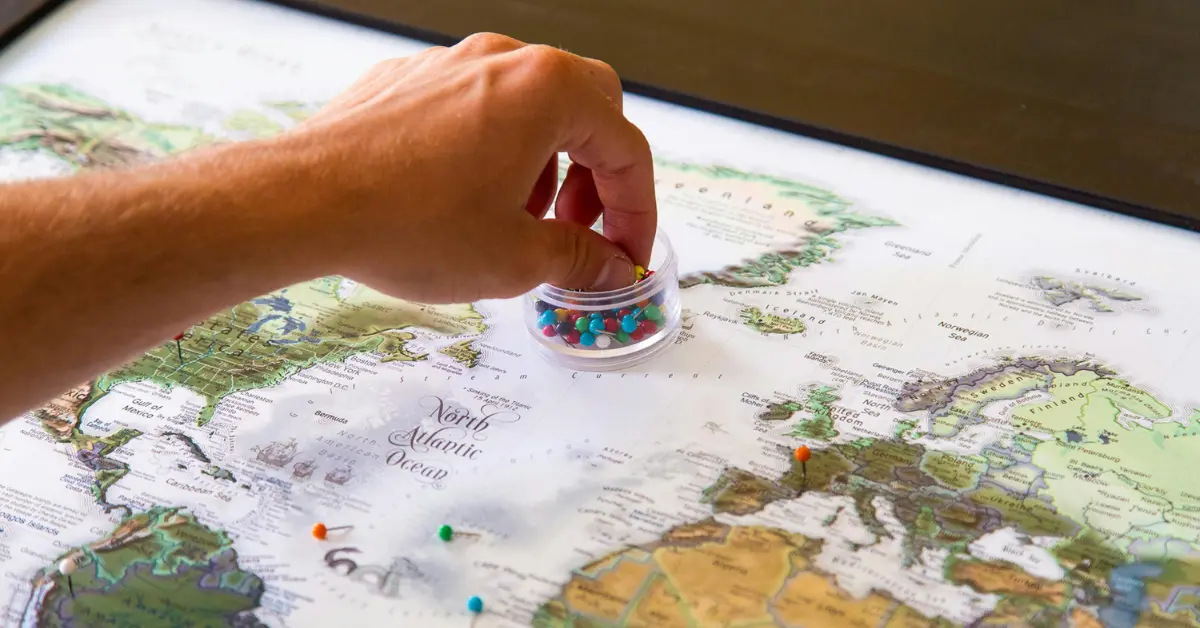
Key Takeaways
- Earth has five major oceans: Pacific, Atlantic, Indian, Southern, and Arctic.
- Each ocean has a unique location, size, and features.
- Oceans play a crucial role in regulating climate and supporting life.
- Human activities, like pollution and overfishing, threaten these vast water bodies.
- Conservation efforts are vital to preserving ocean ecosystems.
Do you know that oceans cover over 70% of the Earth’s surface? These enormous water bodies shape the world we live in—impacting weather, supporting life, and driving the global economy. But how much do you really know about the oceans? Where exactly are they located, and why are they so important? Stick around, because we’re diving deep into the wonders of the world’s oceans.
The Five Major Oceans of the World
The Earth’s oceans are divided into five main parts, each with unique features and locations. Let’s explore them one by one.
The Pacific Ocean: The Mighty Giant
The Pacific Ocean is the largest ocean, covering about 63 million square miles. It stretches from the western coasts of North and South America to Asia and Australia in the east.
- Location: Between Asia, Australia, and the Americas.
- Key Features:
- Mariana Trench, the deepest point on Earth, lies here.
- Known for its “Ring of Fire,” an area with frequent earthquakes and volcanic eruptions.
- Importance:
- The Pacific supports rich biodiversity, including coral reefs like the Great Barrier Reef.
- It’s a crucial route for international trade.


The Atlantic Ocean: A Bridge Between Continents
The Atlantic Ocean connects the Americas with Europe and Africa. It is the second-largest ocean, covering 41 million square miles.
- Location: Between the Americas, Europe, and Africa.
- Key Features:
- The Mid-Atlantic Ridge, an underwater mountain range, runs down the center.
- Famous for the Bermuda Triangle and its mysterious legends.
- Importance:
- Historically vital for exploration and colonization.
- Plays a major role in global shipping and fishing industries.


The Indian Ocean: The Warm Water Treasure
The Indian Ocean is the third-largest ocean and is surrounded by Asia to the north, Africa to the west, and Australia to the east.
- Location: Between Asia, Africa, and Australia.
- Key Features:
- Home to unique marine species and coral reefs.
- Influenced by monsoon winds, which are vital for agriculture in surrounding regions.
- Importance:
- Rich in marine resources like fish and oil.
- A key trade route for many countries.
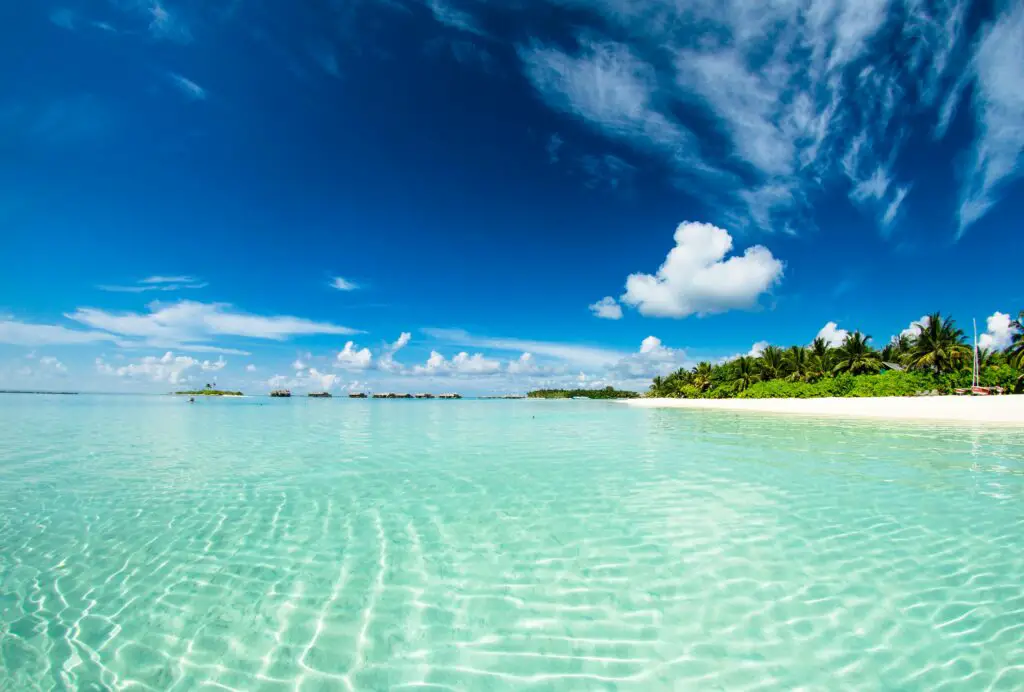

The Southern Ocean: The Frozen Frontier
The Southern Ocean, also called the Antarctic Ocean, surrounds Antarctica and connects the Pacific, Atlantic, and Indian Oceans.
- Location: Encircling Antarctica.
- Key Features:
- Known for its freezing temperatures and icy waters.
- Home to unique species like penguins and seals.
- Importance:
- Helps regulate Earth’s climate through the Antarctic Circumpolar Current.
- Plays a key role in the global carbon cycle.


The Arctic Ocean: The Icy Wonder
The Arctic Ocean is the smallest and shallowest ocean, located in the Arctic Circle.
- Location: Surrounds the North Pole, bordered by North America, Europe, and Asia.
- Key Features:
- Covered in sea ice for most of the year.
- Important for studying climate change due to its melting ice caps.
- Importance:
- Rich in marine life adapted to extreme cold, like polar bears and narwhals.
- Contains vast untapped natural resources, including oil and gas.


Why Are Oceans Important?
Oceans are more than just massive water bodies—they’re lifelines for the planet.
- Climate Regulation: Oceans absorb heat and distribute it through currents, keeping the planet’s temperature stable.
- Oxygen Production: Marine plants like phytoplankton produce more than 50% of the oxygen we breathe.
- Biodiversity: Home to countless species, many of which are still undiscovered.
- Economic Value: Oceans support industries like fishing, tourism, and transportation.
Challenges Facing the Oceans
Unfortunately, human activities are putting the health of oceans at risk.
- Pollution: Plastic waste and oil spills contaminate marine habitats.
- Overfishing: Depletes fish populations and harms ecosystems.
- Climate Change: Causes sea level rise and ocean acidification, threatening marine life.
What Can We Do?
- Reduce plastic use and recycle waste.
- Support sustainable fishing practices.
- Advocate for policies to protect marine habitats.
FAQs
Which is the largest ocean in the world?
The Pacific Ocean is the largest, covering about 63 million square miles.
How many oceans are there?
There are five major oceans: Pacific, Atlantic, Indian, Southern, and Arctic.
Why are oceans important to us?
Oceans regulate the climate, produce oxygen, support biodiversity, and provide food and resources.
What is the smallest ocean?
The Arctic Ocean is the smallest and shallowest of the five oceans.
Conclusion
Oceans are essential for life on Earth, offering countless benefits and sustaining diverse ecosystems. However, they face significant threats from human activities. By understanding their importance and taking steps to protect them, we can ensure a healthier planet for future generations. Let’s treat our oceans with the care they deserve!
-

 Animals12 months ago
Animals12 months agoTypes of Ants Living in the World and Information
-

 Forests12 months ago
Forests12 months agoThe 10 Best Forests to Visit in the World
-

 Ocean1 year ago
Ocean1 year agoOceans in the World and Their Information & Locations
-

 Forests4 years ago
Forests4 years agoWhat Is The Biggest Rainforest In The World?
-

 Animals4 years ago
Animals4 years agoMost Popular Wild Animals in The World
-

 Animals4 years ago
Animals4 years ago(10) Insects Are Animals in the world?
-

 Forests1 year ago
Forests1 year agoThe Main Factors That Contribute to Forest Destruction
-

 Nature11 months ago
Nature11 months agoThe 10 Largest Farms in the World


